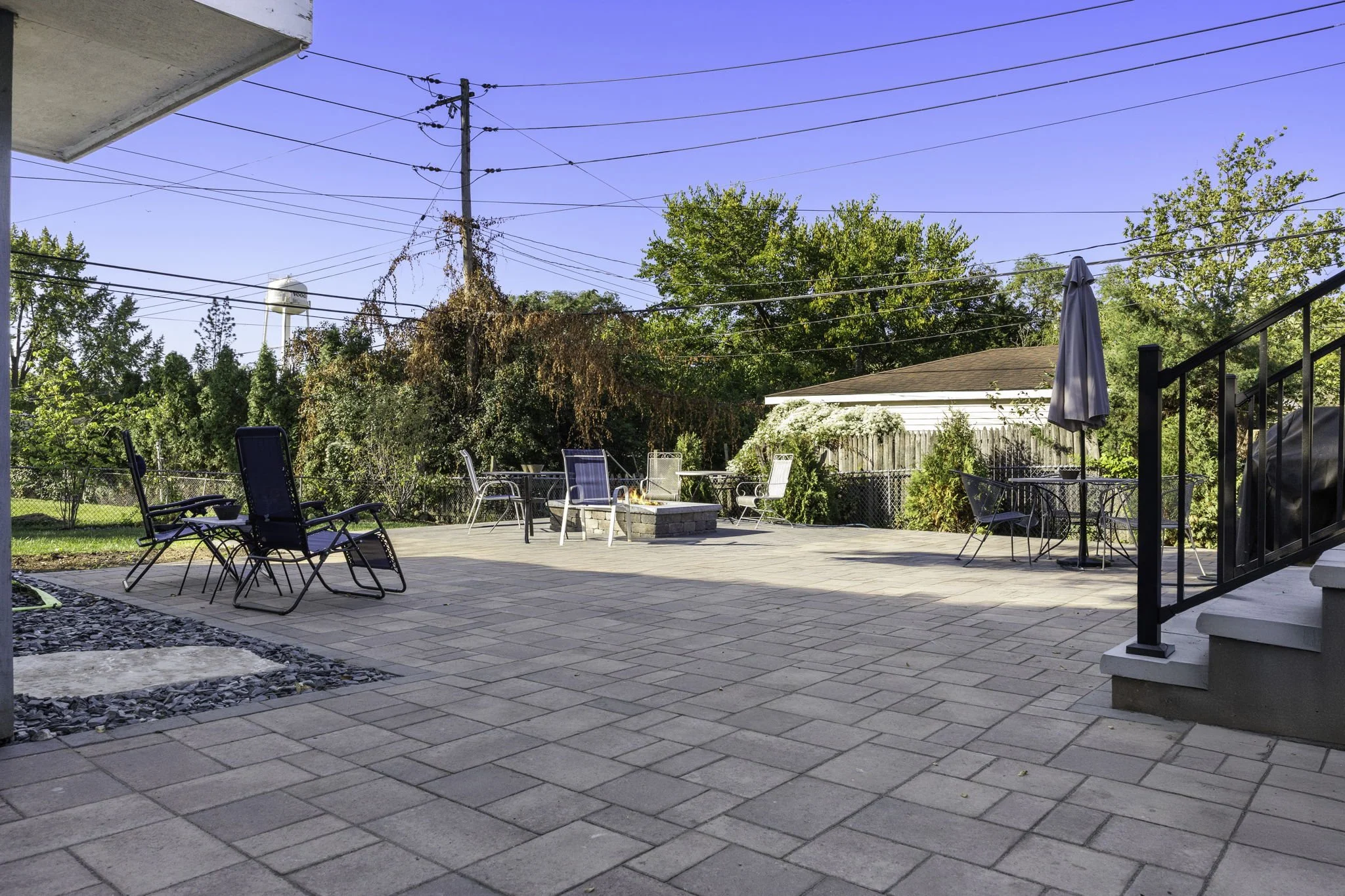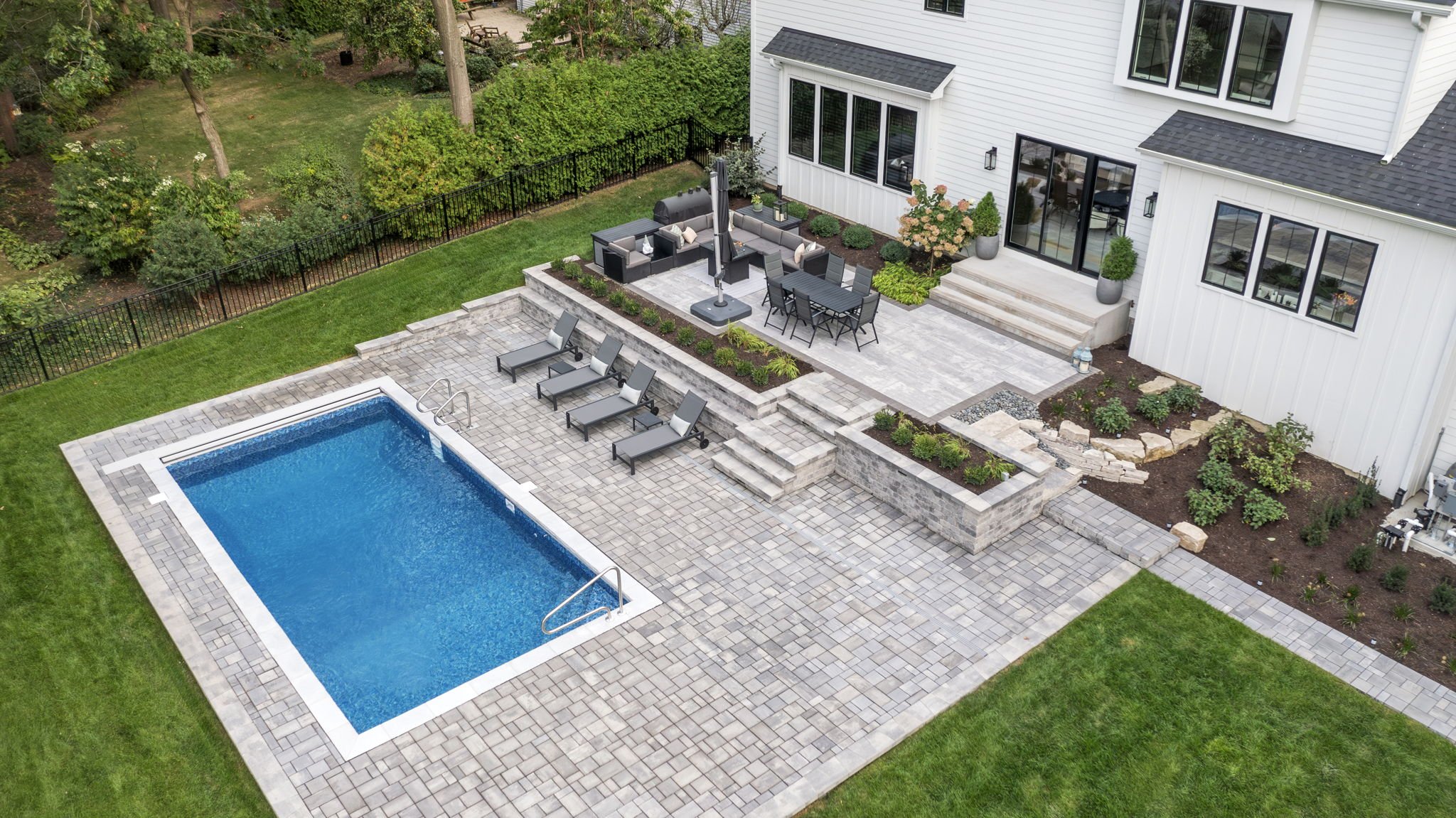Christmas Light Displays in Chicago that Are Worth the Drive!
Naperville and the surrounding area are wonderful places to live all year long, but they become magical during the holiday season. As a family, we particularly love exploring the area and enjoying holiday lights all around Chicagoland. Here are our favorite Christmas light displays in Chicago – we hope they put you in the holiday spirit and give you some quality time together as a family!
Small Spaces, Big Possibilities
No matter the size of your yard, there are big possibilities to turn it into the outdoor living space you’ve always wanted. All we need are your vision and our years of expertise – together we will come up with something amazing! Join us as we walk through an outdoor transformation of a quaint space in Woodridge that was just begging for an upgrade.
Autumn in Chicago: Our Favorite Places to Soak Up the Season
Fall sure came in with a bang this year, transitioning from unseasonably warm temperatures to needing to pull out the stocking hats and gloves. We’re a couple months away from winter, though, so why not continue to enjoy autumn in Chicago with some of our favorite outdoor spots? Here are the places we’ll continue to enjoy as long as possible!
Ask the Horticulturist: Can I Plant in the Fall?
The official start of fall is just around the corner, and with it comes the promise of cooler temperatures, falling leaves, and nights around the fire pit roasting s’mores. While most of us think of spring as prime planting season, planting in the early fall – prior to mid-October - is also a great choice (and honestly a better choice, in some cases!). There are a few things to consider, though, in order to help newly planted shrubs, trees, and perennials thrive. In this edition of Ask the Horticulturist, we turn to Carlos for his best fall planting tips.
Outstanding Projects Are Made Better with Outstanding Partners!
Over the 30 plus years Montano’s Landscaping has been serving Naperville and the surrounding area, we have been fortunate to have fostered incredible partnerships with the highest quality suppliers. We stand behind our craftsmanship, thanks to our highly skilled and dedicated team, but also thanks to working with such exceptional wholesale partners. Enjoy this glimpse into who provides the materials we install to bring our designs to life – making your outdoor space exactly what you always dreamed of.
The Best Outdoor Dining in the Naperville Area
Beautiful weather calls for lots of time outdoors, and when you can combine being outside with delicious food – that’s a definite win! Naperville and the surrounding area has a treasure trove of outstanding restaurants, offering a wide variety of cuisine and ambiance. Our family loves going out to eat together, especially when we can also enjoy outdoor dining at some of our favorite haunts. Here’s the Montano family’s list of our favorite outdoor dining in the Naperville area.
Looking for Summer Bucket List Ideas Around Naperville, IL? Start Here!
If there is one thing you can count on with the Montano family, it is that we will spend as much time outside as we possibly can. Rain or shine, hot or cold, we are an outdoorsy bunch. To help you with your Summer Bucket List in the western suburbs, we put together some of our absolute favorite spots to visit as a family. Enjoy our fave places, many of which are free activities in Chicagoland!
Spring Planting Tips & Advice: Ask the Horticulturist
If you follow us on social media, you have likely seen several installments of our “Ask the Horticulturist” series. Carlos, our owner, has a degree in horticulture and loves helping our clients select plants, trees, and shrubs that will flourish for years to come. Now that we’re in the thick of the spring planting season, we thought we’d gather some of the most commonly asked planting questions to share with you.
Putting in a Pool? Let’s Talk About Available Features!
Making the decision to put in a pool is only the beginning. The first big question is what type of pool you plan to have installed – vinyl, fiberglass, or concrete. Next up, you need to decide how you’d like your pool to fit into your overall landscape design and what features you want to include. Let’s talk about all the options!
What You Need to Know About the 3 Types of In-Ground Pools
Now that we have made our official announcement that Montano’s Landscaping has expanded our services to include in-ground pools and spas, we are excited to help our clients understand the options available to them. When our owners, Carlos and Amanda, had a pool installed at their home a number of years ago, they were overwhelmed by all the options. To make it easier for you as you consider adding an in-ground pool to your landscape design, our latest blog compares the pros and cons of each pool type.
The Secret Behind Watering – How Much is Too Much?
Throughout our 30+ years providing landscaping services in Naperville and the surrounding areas, we have seen one common culprit when it comes to issues with plants, trees, and shrubs. While bunnies, squirrels, and other wildlife can be particularly destructive, the single biggest obstacle to a flourishing garden is water. How do you know how much is enough and how much is too much? Read more in our latest blog!
Expert Advice for Spring Cleanup and Garden Bed Planning
If you’re already thinking spring, you’re not alone! Montano’s starts getting calls in February from families looking to get a jump on their spring landscaping projects; not only are these clients able to book some of our first spring project slots, they also have the benefit of time to properly prepare. Let’s talk about some of the things you can be thinking about and doing now as you consider spring cleanup in your yard and plan for your landscape project in the western suburbs.
Oh My Gosh, You’re Putting in a Pool! Channel Your Inner Clark Griswold This Winter.
One of our favorite Christmas movies is National Lampoon’s Christmas Vacation. It’s a classic story of a wholesome Midwestern family, the Griswolds, who experience just about every mishap that could occur throughout the holiday season. But part of what makes the movie such so well-loved is that everything Clark does is fueled by his desire to create the perfect Christmas for his family – including using his Christmas bonus to put in a pool. With all of Clark’s snafus, let’s focus on the things he gets right when it comes to his pool dream.
Community First: Naperville’s Parade of Lights
There are many reasons that Naperville is exceptional, but for us, at the top of the list are all the events throughout the year, such as Naper Nights and Last Fling. One of our holiday traditions as a family has always been to bundle up and brave the cold for the Rotary Club of Naperville’s Parade of Lights. Each year, we thought how much fun it would be to participate in the parade, and this year we made it happen! It was even better than we could have imagined – read on to learn why!
The Winning Strategy for Corporate Landscape Design & Installation
We’ve all heard the adage “you don’t get a second change at a first impression,” and it rings especially true when you’re a business owner with a brick & mortar location. What’s different today than a decade or two ago is that the first impression isn’t just for your consumers – it’s for your potential team members, as well.
Thinking About a Spring Outdoor Living Renovation? 5 Things to Do Now.
As it gets chillier and you reflect on the spring and summer, are you wishing you spent more time enjoying your outdoor living space? If so, you’re not alone. Many people tell us that they don’t spend nearly as much time in their outdoor space as they’d like, and it’s usually because the space just doesn’t meet their wants and needs. If you’re looking to do an outdoor living renovation in Spring 2025, here are 5 things to do now to make sure you’re ready!
Behind the Scenes: Developing a Suburban Oasis in Lisle
Do you love those behind the scenes shows where you get to follow along as a renovation takes place? We’ve got the next best thing – join Carlos as he walks us through the creation of a suburban oasis in Lisle for our clients Scott and Claudine. As an added bonus, hear from Scott and Claudine themselves regarding what they were looking for, how they use the space, and their experience working with Montano’s Landscaping.
Meet the Montanos: Serving the Western Suburbs for 30+ Years
If you ask anyone in the Montano family what the driving force was in 1992 when the business started with a used truck and a lawn mower, they will all give you the same answer – Maria. Juan may have been the one driving that truck and doing the work making people’s lawns beautiful, but Maria’s encouragement and support was the special sauce. Join us on a drive down memory lane as we share the Montano’s Landscaping story.
Christmas in July: 4 Plants That Thrive in Summer and Winter
Alright, we’ll hop on the Christmas in July trend, landscaping style. When it comes to choosing plants that beautify your gardens in the Chicagoland area, most of us think about spring, summer, and fall. After all, who is worried about landscaping when we’re dealing with snow and ice? But if the curb appeal of your home is important to you year-round, there are plants and shrubs you can choose that remain lovely even when the snow flies. Here are some of our favorites.
Putting in a Pool in the Western Suburbs Doesn’t Have to be a Hassle
At Montano’s Landscaping, we strive to make your experience of enhancing your outdoor living space as seamless and enjoyable as possible. Thanks to our partnership with one of the most well-respected and highest quality pool & spa builders in the western suburbs, we handle the details, and you have a one stop shop to ensure the pool of your dreams is open for swimming in less time than you ever imagined.




















